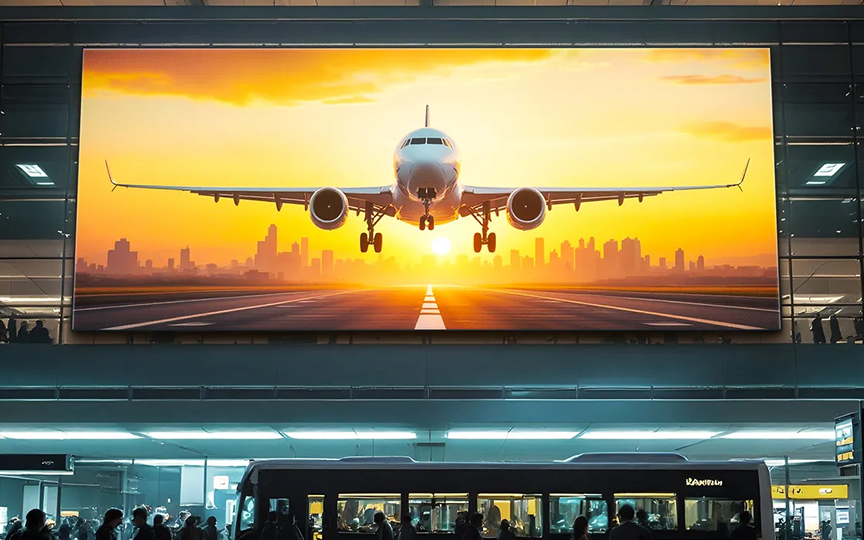Airports and transportation hubs are busy places where travelers rely heavily on clear and timely information. Whether it’s checking flight times, finding gates, or following directions, having bright and easy-to-read displays is essential. LED screens have become the preferred choice because they provide excellent visibility and can operate reliably in different lighting conditions.

Unlike traditional LCD panels, LED displays are designed for visibility at long distances, across wide viewing angles, and even under harsh lighting conditions. In airports and large transport hubs, these features are not just a bonus — they’re critical.
Where Are LED Displays Used in Transportation Spaces?
1. Flight and Departure Information Boards (FIDS/DIDS)
These are typically placed above check-in counters, in departure halls, and near gates. LED displays make flight status updates clear and legible, even from across the terminal. A high refresh rate ensures smooth scrolling and no flicker, especially for cameras or live broadcast coverage.
2. Advertising and Digital Signage Walls
Transportation hubs are high-traffic areas, making them ideal for digital out-of-home (DOOH) advertising. Large-format LED video walls installed in walkways, arrival halls, and baggage claim zones provide advertisers with eye-catching space while generating revenue for the facility.
3. Wayfinding and Directional Signage
Dynamic LED displays help guide travelers through complex buildings. They can be updated instantly to reflect construction zones, gate changes, or special access routes — reducing confusion and improving the passenger experience.
4. Security and Emergency Messaging
In high-security areas, communication is key. LED screens can be connected to centralized systems to display emergency alerts, crowd control messages, and important instructions in real time.
5. Exterior Displays and Drop-Off Zones
High-brightness outdoor LED screens are often installed at entrances, drop-off zones, or taxi stands. These must be IP-rated (typically IP65 or higher) to withstand weather and operate 24/7 under sunlight.
What Makes a Good LED Display for Transportation Use?
High brightness (≥ 4,000–6,000 nits) for indoor spaces with natural light, or even higher for outdoor use
Reliable 24/7 performance with industrial-grade components
Seamless, bezel-free visuals for better legibility and aesthetics
Fine pixel pitch (e.g., P2.5, P3) for indoor areas where passengers view screens up close
Flexible control systems to manage multiple content sources across terminals
Durability and easy maintenance, with front/rear access depending on installation location
How Topview Display Supports the Transportation Sector
At Topview Display, we offer customized LED display solutions tailored for transportation environments. Our engineering team supports clients from system design to installation, ensuring each display is optimized for brightness, resolution, structure, and control. Whether it's a large international airport or a local bus terminal, we help operators build reliable, long-lasting display systems that enhance communication and passenger satisfaction.

